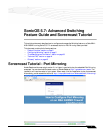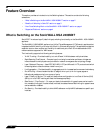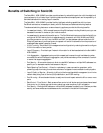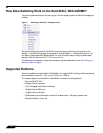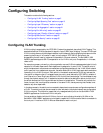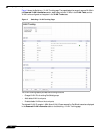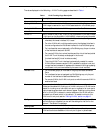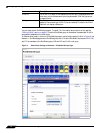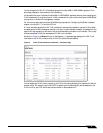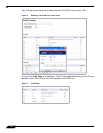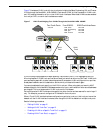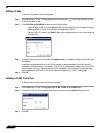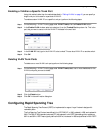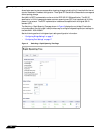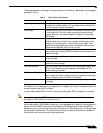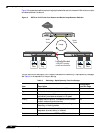
Feature Overview
2
SonicOS 5.7: Advanced Switching Feature Guide and Screencast Tutorial
Feature Overview
This section provides an introduction to the Switching feature. This section contains the following
subsections:
• “What is Switching on the SonicWALL NSA 2400MX?” section on page 2
• “Benefits of Switching in SonicOS” section on page 3
• “How Does Switching Work on the SonicWALL NSA 2400MX?” section on page 4
• “Supported Platforms” section on page 4
What is Switching on the SonicWALL NSA 2400MX?
SonicOS 5.7 introduces Layer 2 (data link layer) switching functionality on the SonicWALL NSA 2400MX
appliance.
The SonicWALL NSA 2400MX appliance is a Unified Threat Management (UTM) security appliance that
integrates the WAN flexibility of a router with 24 built-in Ethernet switch ports. The appliance provides two
expansion slots to allow modular card flexibility for additional ports. Both 3G wireless cards and V.90
modem cards are supported for WAN access.
The functionality supports the following switching features:
• VLAN Trunking – Provides the ability to trunk different VLANs between multiple switches.
• Rapid Spanning Tree Protocol – Prevents loops from being formed when switches or bridges are
interconnected via multiple paths and provides for network convergence after a topology change.
• Layer 2 Network Discovery – Uses IEEE 802.1AB (LLDP) and Microsoft LLTD protocols and switch
forwarding table to discover devices visible from a port.
• Link Aggregation – Provides the ability to aggregate ports for increased performance and redundancy.
• Port Mirroring – Allows the administrator to assign a mirror port to mirror ingress, egress or
bidirectional packets coming from a group of ports.
• Layer 2 Quality of Service – On a per port basis, allows configuration to trust Cost of Service (CoS)
(802.1p) or trust DSCP marking and treat the frames appropriately.
• Rate Control / Flow Control – On a per port basis, the bandwidth of ingress frames can be tuned in
four modes by limiting all/flooded unicast/multicast/broadcast frames. Rate limiting for egress frames
can be enabled or disabled.
• Port Security – Provides the ability to bind a MAC address or multiple MAC addresses to a specific port
interface.



